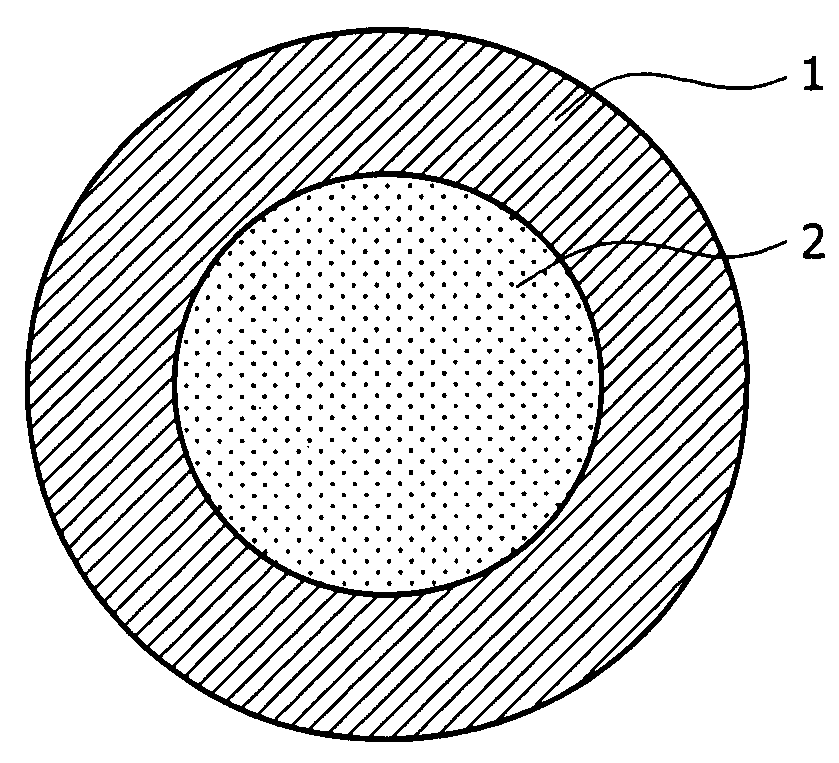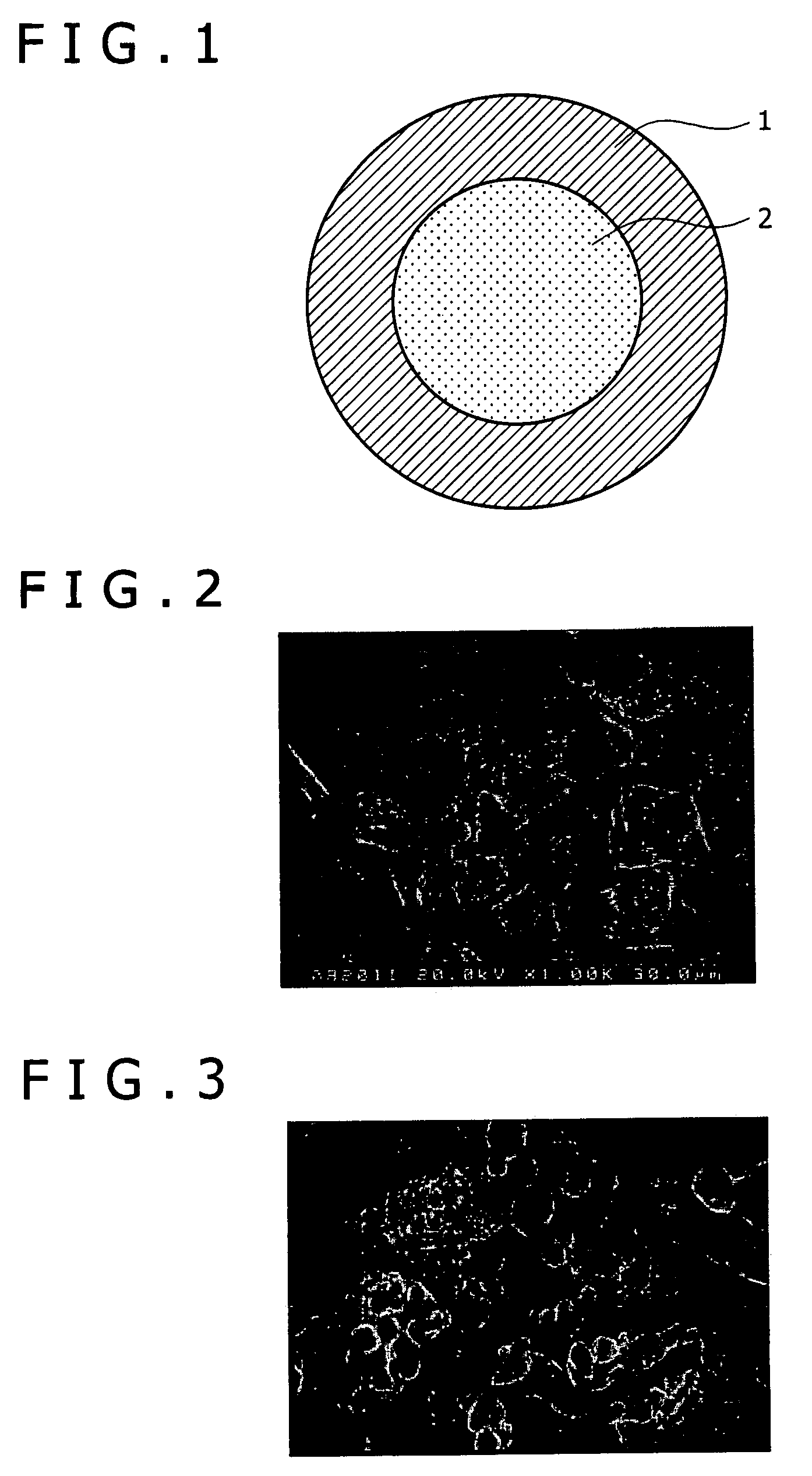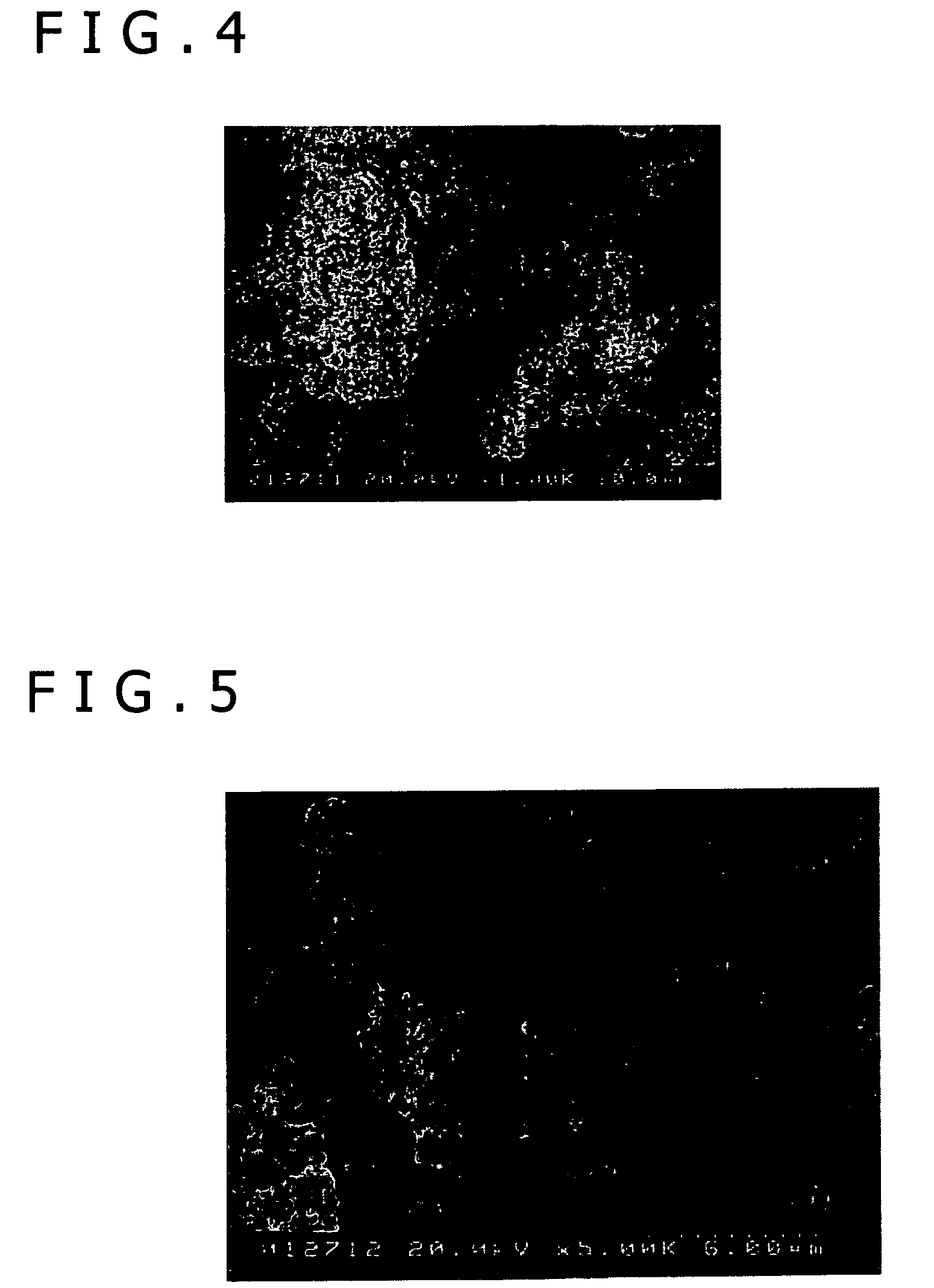Manufacturing method of Nb3Sn superconductive wire using powder technique
a manufacturing method and superconductive wire technology, applied in the manufacture of cables/conductors, superconductor devices, transportation and packaging, etc., can solve the problems of deterioration in both crystallinity and high magnetic field characteristics, high pulverization process difficulty, and concentration of sn that can be dissolved, and achieve excellent superconductivity. , the effect of excellent
- Summary
- Abstract
- Description
- Claims
- Application Information
AI Technical Summary
Benefits of technology
Problems solved by technology
Method used
Image
Examples
experimental example 1
[0041]Ta powder, of which primary particles are obtained by the oxygen reduction process using Na while secondary particles are formed by aggregating the primary particles in a coral shape, was prepared. An average particle size of primary particles was 10 μm or below and an average particle size of secondary particles was between 30 μm and 200 μm. According to the measurement by inert gas fusion method (measurement device: LECO's RH-404 (hydrogen), TC-436R (oxygen), Applied voltage: 5000 W, Analysis time: 85 sec), the concentration of hydrogen in the powder of interest was 56 ppm and that of oxygen was 600 ppm. The average particle size of primary particles was obtained using an electron microscope picture (× 5000). For the measurement, 30 particles out of ones with measurable diameters were randomly selected, and diameters of these randomly selected particles were measured and averaged. Similarly, the average particle size of secondary particles was obtained using an electron micr...
experimental example 2
[0049]The same method used in Experimental Example 1 was used to prepare an intermetallic compound powder, except for that EB powder of an average particle size of 325 mesh or below (45 μm or below) shown in FIG. 2 was used as Ta powder. It turned out that the same pulverization technique employed in Experimental Example 1 after melt-diffusion heat treatment was not so effective to obtain fine powder. Moreover, although a pulverization process was performed in automatic mortar for one hour, the amount of powder having passed through a 150 μm-mesh was merely about 60%.
experimental example 3
[0050]The Ta powder with reduced oxygen using Na obtained from Experimental Example 1 was used, except for that hydrogen concentration in the Ta powder was 1500 ppm and oxygen concentration was 4000 ppm. Although the melt-diffusion treatment was proceeded using this Ta powder, the internal pressure of a furnace was increased around a temperature of about 500° C. due to the effusion of hydrogen. For the safety of a heat treatment furnace, the heating process was virtually stopped. Later, when the temperature was lowered, a degassing phenomenon was controlled. After the pressure was restored, heat treatment was restarted, but again the temperature started increasing around 500° C. due to the degassing phenomenon. Afterwards, the same procedure was repeated for 10 hours. In short, for increasing the temperature for heat treatment up to 950° C., it took 15 hours, which is three times the predetermined amount of time (5 hours).
[0051]In addition, by using the powder thus obtained, a super...
PUM
| Property | Measurement | Unit |
|---|---|---|
| particle size | aaaaa | aaaaa |
| temperature | aaaaa | aaaaa |
| temperature | aaaaa | aaaaa |
Abstract
Description
Claims
Application Information
 Login to View More
Login to View More - R&D
- Intellectual Property
- Life Sciences
- Materials
- Tech Scout
- Unparalleled Data Quality
- Higher Quality Content
- 60% Fewer Hallucinations
Browse by: Latest US Patents, China's latest patents, Technical Efficacy Thesaurus, Application Domain, Technology Topic, Popular Technical Reports.
© 2025 PatSnap. All rights reserved.Legal|Privacy policy|Modern Slavery Act Transparency Statement|Sitemap|About US| Contact US: help@patsnap.com



